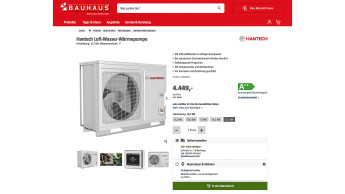

deep insights, facts & figures

While Canada’s economy has not suffered to the degree as Europe and the U. S., the DIY market remains healthy in large part. The country’s retailers continue to reinvent themselves
After a decade of solid growth, sales by Canada’s home improvement retailers began falling two years ago. Turnover dipped by 1.5 per cent in 2008, and that trend continued into 2009. Even though a recovery began to take hold by the middle of the third quarter of last year, sales were still down again, by an estimated 1.8 per cent, to about CDN $ 39 bn. However, taken in the context of the global downturn, Canada was relatively unscathed. “As the economy begins a gradual rebound, consumer confidence keeps slipping and unemployment rates continue to creep up,” said Beverly Allen, publisher of Hardlines, the weekly newsletter for the home improvement industry. Regional independent dealers and small chains have become the focus of “secondary consolidation”, as many companies are buying up other stores or competitors to achieve multiple locations. These independents, such as Kent in Atlantic Canada, Canac Marquis Grenier in Quebec, and McMunn & Yates in Alberta, are reasserting dominance in their markets. The traditional hardware store format, once considered a casualty of big box expansion, has been the surprise winner among retail formats. The key factor driving this is greater customer demand for service plus convenience, along with growing awareness of price competitiveness dealers like Home Hardware, Ace and True Value. Both Rona and Kent have been de-emphasizing growth through large-format stores, while both Home Depot and Lowe’s are experimenting with smaller big box footprints. This has proved a good strategy, as the big boxes have been the losers in a recessionary economy. The urban markets, where these stores are concentrated, were hardest hit by the economic downturn. “Home Depot’s performance in Canada has been historically ahead of the U.S. Last year, it was very close to the U.S. parent,” says Allen. Rona’s own independent hardware and building material dealers have been shoring up that company’s fortunes as its larger and corporate stores took the brunt of the slowdown, and consolidated sales for Rona were down by 4.4 per cent last year. Meanwhile, Lowe’s is enjoying a solid expansion plan that has been helped, not hindered by the downturn, as competitors have pulled back their own expansion plans. It now has 16 stores in Canada. Looking for ways to penetrate the secondary markets, Home Depot Canada opened its first “rural market” store concept in the resort town of Parry Sound, about two hours north of Toronto. It’s only 4 200 m² in size…
Related articles
Read also

 Menü
Menü












 Newsletter
Newsletter